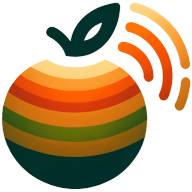7 High-Fiber Foods for Weight Management
In the quest for effective weight management, discovering the right high-fiber food can be a game-changer. This article explores how chia seeds promote fullness and how dietary fiber can encourage a feeling of fullness. With seven insightful responses, readers will find practical ways to incorporate high-fiber foods into their diet for better health. From stabilizing blood sugar to supporting gut health, these insights offer a comprehensive guide to harnessing the power of dietary fiber.
- Chia Seeds Promote Fullness
- Chia Seeds Reduce Calorie Intake
- High-Fiber Foods Aid Digestion
- Fiber-Rich Foods Stabilize Blood Sugar
- High-Fiber Foods Discourage Overeating
- High-Fiber Foods Support Gut Health
- Dietary Fiber Promotes Fullness
Chia Seeds Promote Fullness
One high-fiber food I consistently recommend for weight management is chia seeds. In my years of experience working with clients focused on both rehabilitation and wellness, I've found chia seeds to be exceptionally effective because they provide a unique combination of soluble fiber, healthy fats, and protein, all of which promote fullness and can reduce the urge to snack between meals. These seeds are hydrophilic, meaning they expand and form a gel-like substance when mixed with liquid, slowing down digestion and helping clients feel satisfied for longer periods. This quality is particularly helpful for clients aiming to manage or reduce their weight, as it can help curb cravings and reduce calorie intake naturally without any drastic diet shifts.
A great example involved a client who struggled with weight management due to a desk job and a tendency to overeat when stressed. After incorporating a tablespoon of chia seeds into her morning smoothie or yogurt, a small change with significant impact, she began to notice reduced hunger throughout the day. We paired this with a tailored exercise regimen to support her overall health. Leveraging my understanding of musculoskeletal health and nutritional impacts on metabolism, I guided her through integrating chia seeds in ways that suited her lifestyle and goals. This approach ultimately helped her maintain a healthier weight, improve energy levels, and reduce the incidence of late-day fatigue—a win on multiple fronts.

Chia Seeds Reduce Calorie Intake
Chia Seeds!
Rich in Soluble Fiber: Chia seeds are loaded with soluble fiber, which absorbs water and expands in the stomach, creating a gel-like substance. This expansion promotes a feeling of fullness, helping to reduce overall calorie intake.
Slow-Digesting: The fiber content slows digestion, leading to a steady release of energy, which helps stabilize blood-sugar levels and curb cravings.
Versatile: Chia seeds can be easily added to a variety of foods like smoothies, yogurt, oatmeal, or even water, making them convenient for a high-fiber boost at any meal.
A tablespoon of chia seeds contains nearly 5 grams of fiber, so adding just a small amount to your diet can make a meaningful difference in managing hunger and supporting weight goals.

High-Fiber Foods Aid Digestion
High-fiber foods are beneficial for digestion, which aids in healthy weight management by ensuring smooth and regular bowel movements. This helps prevent constipation and bloating, making it easier to maintain a healthy weight. Additionally, a well-functioning digestive system absorbs nutrients more effectively.
The improved nutrient absorption can lead to better overall health. Try incorporating more high-fiber foods into your diet to support your weight management goals.
Fiber-Rich Foods Stabilize Blood Sugar
Fiber-rich foods are known for their ability to stabilize blood sugar levels, which can reduce cravings for unhealthy snacks. When blood sugar levels are stable, there are fewer spikes and drops that often lead to overeating. This can help prevent the cycle of quick energy boosts followed by crashes.
A stable blood sugar level also supports consistent energy levels throughout the day. Make sure to add fiber-rich foods to your meals to help curb those unnecessary cravings.
High-Fiber Foods Discourage Overeating
Consuming high-fiber foods can increase feelings of fullness, leading to fewer calories consumed overall. This can be particularly helpful for those looking to manage their weight, as it discourages overeating. High-fiber foods take longer to chew and digest, which can extend the feeling of being full.
This delayed digestion process can also spread the release of sugar into the bloodstream. Consider incorporating high-fiber foods to naturally reduce your calorie intake.
High-Fiber Foods Support Gut Health
High-fiber foods play a key role in supporting gut health, which is closely linked to weight regulation. A healthy gut can positively influence metabolism and the absorption of nutrients, both of which are important for maintaining a healthy weight. Certain fibers act as prebiotics, feeding the good bacteria in the gut.
This can improve overall digestive health and enhance the body's ability to process foods. To promote a healthy gut, include high-fiber foods in your diet.
Dietary Fiber Promotes Fullness
Dietary fiber adds bulk to meals, promoting a sense of fullness and satisfaction. This bulkiness helps you feel satisfied with fewer calories consumed. It can also help slow down the eating process, allowing your body to recognize when it’s full before you've overeaten.
The feeling of fullness can last longer, preventing the need for frequent snacking. Focus on eating more high-fiber foods to feel fuller and more satisfied throughout the day.

